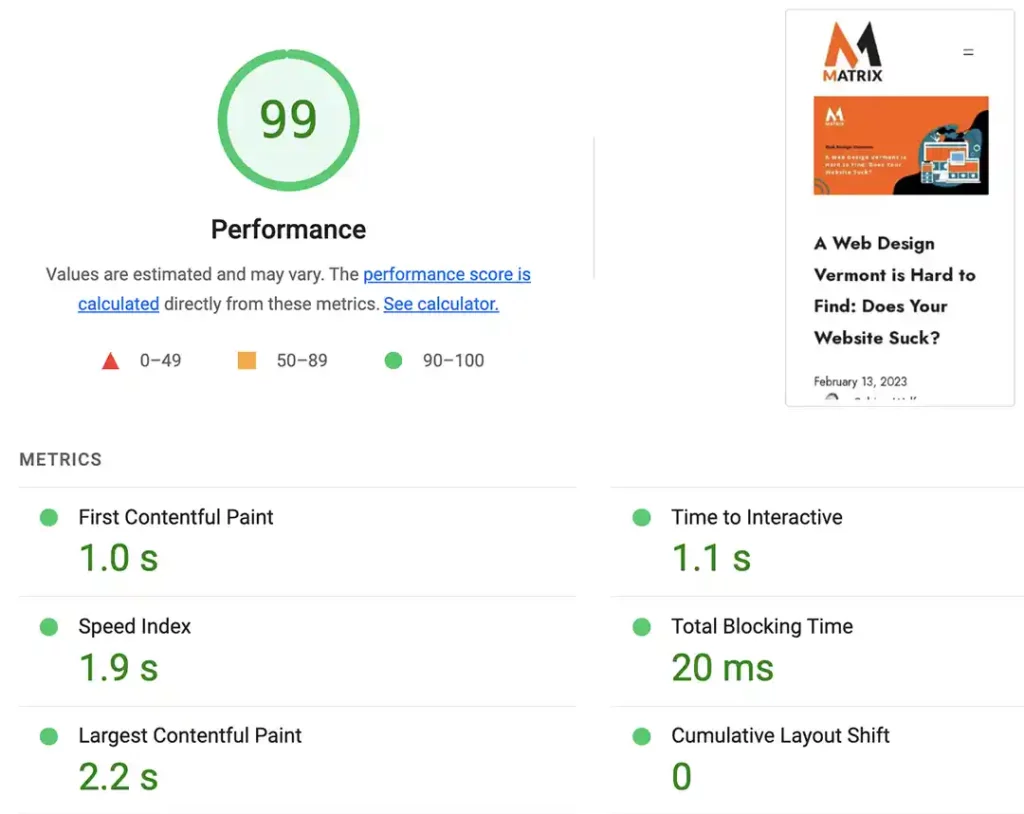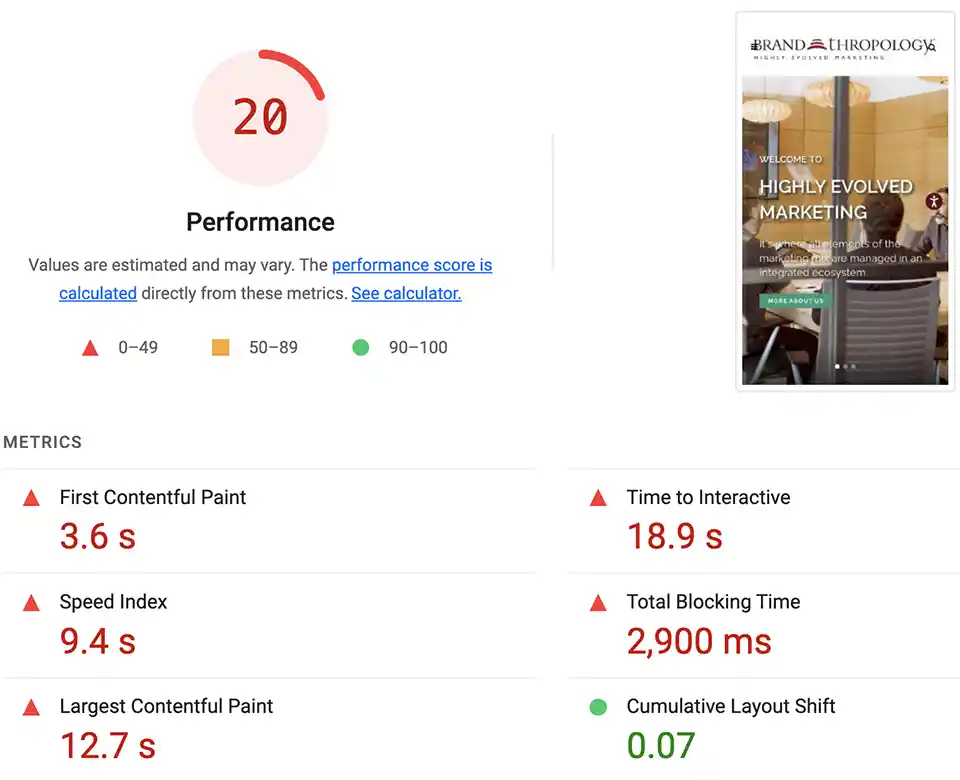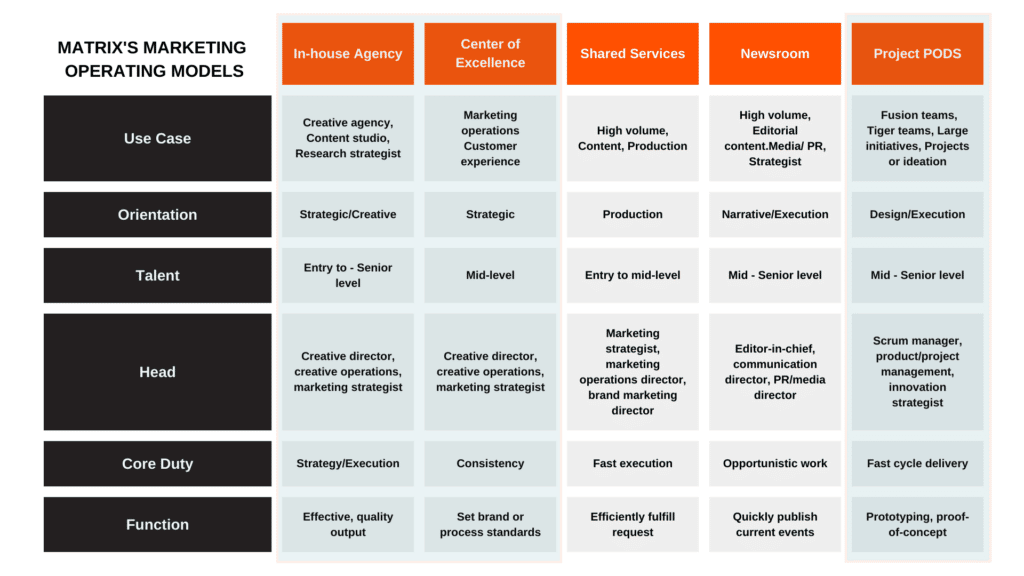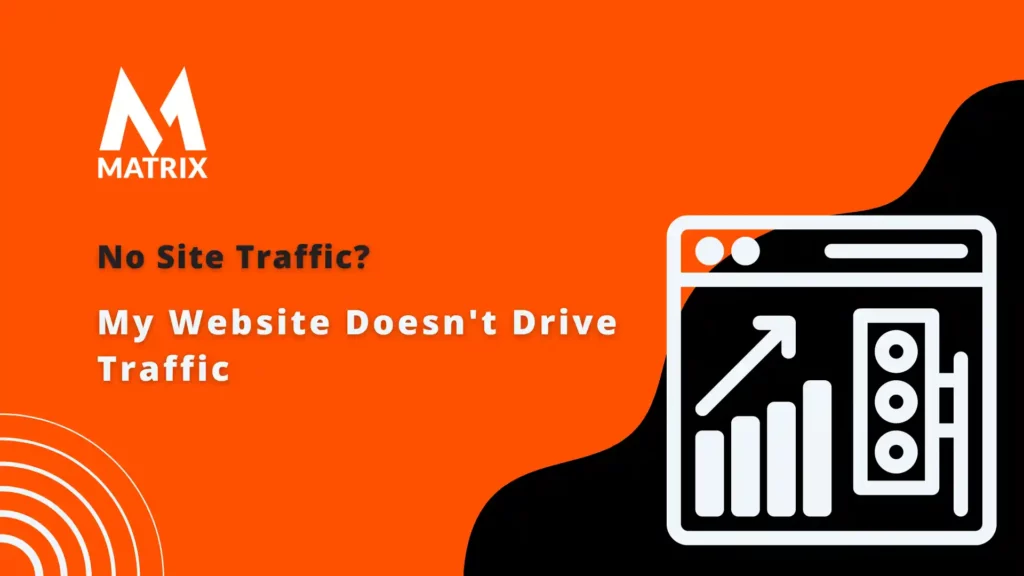My Website Doesn’t Drive Traffic
Learn Why Your Website Doesn’t Drive Traffic.
If you’re looking for ways to increase your website’s traffic, this blog post is for you! Many CMOs face this struggle, but web optimization can gain more customers.
This blog post will cover why many websites need higher visibility and how optimizing certain components can help generate more leads and sales. Learn the best ways to drive traffic to your website.
Identify the Problem – What Areas of Your Website Need Improvement
Identifying the exact problems that prevent your website from drawing in traffic is essential. Common issues include an unclear value proposition, a need for more engaging content, or even a lack of technical optimization for search engine optimization (SEO).
Please pay close attention to the user experience on your website, as it can make a big difference in converting and retaining customers.
A website audit is a useful tool to diagnose any underlying issues that may be stunting the growth of your website. Once you understand what areas need improvement, you can focus on solutions and create an action plan for success.
Analyze Your Target Audience – Who Are You Trying to Reach and What Do They Need
Analyzing your target audience is one of the most important steps in creating a successful website that drives meaningful traffic. Finding out who you should target and what they desire can take time and effort to untangle. Still, it’s a necessary step if you want to effectively create a product or service that your intended audience will appreciate.
Knowing who you’re speaking to and what their needs allow you to communicate with them in a much more tailored and effective way, ultimately making it easier to draw in viewers who are genuinely interested in what you have to offer.
With this information, your website can become an engaging hub for those searching for exactly what you provide – leading to the clicks, likes, and shares that eventually turn into tangible leads.
Look for SEO Opportunities – How Can You Increase Visibility Through Search Engines

Today, businesses need to invest a lot of effort in increasing visibility through search engine optimization (SEO). SEO is like a puzzle – once all the pieces are put together, your website will appear higher up on the list of search results.
One way to boost your website’s visibility is to optimize its content to include relevant keywords based on what customers may search for different products and services. Drive website traffic with social media like Facebook and LinkedIn.
Here is a poorly designed website. You must learn how to drive traffic to your website with you using 27 ways to drive traffic to your website. Good luck tracking it all. You have the 80/20 rule.

Creating compelling titles and meta descriptions can help draw readers in and set your site apart.
Link building is also important as it can show search engines that other sites consider your content valuable. By implementing and optimizing these SEO strategies, you’ll have a better chance of driving traffic to your website.
Optimize Content Quality – How Can You Improve the Quality of Content on Your Site
Enhancing the quality of content on a website is a crucial factor in driving traffic. Providing content people are interested in and will keep returning to is important. Quality content should include well-defined topics, consistent formatting, as well as take account spelling and grammar. Furthermore, statements should be accurate and factual.
It is also beneficial to include new information, such as current trends or news related to the topic, for updates regularly.
Additionally, keywords can ensure the page appears higher when searched for, thus improving reach and visibility. With careful consideration of these points, website owners can ensure that their page provides valuable information that drives increased traffic.
Utilize Social Media Platforms – How Can You Leverage Social Media to Drive Traffic
With the right strategy, leveraging social media platforms can be a powerful way to drive traffic to your website. Creating content and forming relationships with potential users on platforms like Instagram, Facebook, Twitter, and LinkedIn can help you build trust and increase engagement with your core audience.
Learn how to drive traffic to your website using social media.
Additionally, it’s important to consider how you can leverage the algorithms with specific content marketing strategies. This includes proper use of tags and hashtags, cross-channel promotion, experimentation with different formats (stories, posts, etc.), and more. With the right combination of tactics, you can ensure that your presence best serves your target users on social media platforms.
Monitor Your Progress – Track Your Analytics and See What’s Working and What Isn’t
Monitoring your progress is one of the most effective tools for determining how well your website is doing in terms of engagement, traffic, and conversions. Make sure to track your analytics diligently to identify the aspects of your website that are working and those that need improvement.
Pay particular attention to metrics such as page views, page speed, session duration, bounce rate, organic search clicks/visits, referring sources, and lead quality. This will better understand what works best for your website and equip you with the necessary information to drive more targeted traffic over time.
7 Tips to improve your website traffic at the top of the funnel
Building an online presence and driving web traffic is no small feat, but it doesn’t have to be daunting. Improving your website at the top of the funnel will give you more chances for conversions and sales.
Here are 7 tips to help you boost that web traffic: make sure you have quality content on your website, optimize your search engine rankings with keywords, increase site speed, use social media to drive people to your website, pay attention to mobile optimization, focus on user experience design basics onsite, and use email newsletters to keep your customers updated.
With the right strategies in place, you can set yourself up for success in reaching more potential customers online.
1. Quality Content: Creating compelling, high-quality content is a great way to draw visitors in and keep them returning for more. Ensure your website’s content is engaging, well-written, and informative. Additionally, using relevant keywords can help boost organic traffic and increase visibility when searched for.
2. Optimize your Search Engine Rankings: Search engine optimization (SEO) techniques can help you rank higher in search engine results pages (SERPs). This includes utilizing appropriate keywords relevant to your website’s topic, optimizing page titles and meta descriptions, and leveraging internal links to create a better user experience.
3. Increase Site Speed: Slow loading times are one of the biggest culprits for driving users away from your website before they even explore what you offer.
Ensuring that your site performs well is essential for a good user experience, so ensure it’s optimized for desktop and mobile devices. Consider investing in a fast hosting solution or upgrading your current services if necessary.
4. Leverage Social Media Platforms: Social media platforms greatly increase website visibility and engagement with potential customers or clients.
Creating content and forming relationships with influencers on popular platforms like Instagram, Twitter, Facebook, or LinkedIn can build trust with users and provide opportunities for viral reach through shares or likes from others who may not have seen your posts otherwise.
5. Mobile Optimization: Mobile usage has been steadily increasing, so ensuring your website is optimized for mobile devices is essential to drive traffic from users who prefer browsing on their phones or tablets over desktops or laptops.
Consider creating an app version of the website that offers an easy-to-navigate interface with features specifically tailored toward mobile use cases.
6. User Experience Design Basics Onsite: A great user experience starts with ensuring visitors enjoy interacting with your website without too much friction slowing them down.
This means making sure menus are simple to navigate through, text on the page is readable without pinching/zooming in and out, there aren’t any dead-end pages (404 errors), images load quickly and accurately reflect what’s being offered on the site—to name a few basic items!.
7. Email Newsletters: Regularly sending out email newsletters helps keep customers up-to-date about product/service offerings while also serving as another avenue to drive web traffic back onto the site! Including links back into blog posts or other elements within each newsletter will encourage readership while keeping customers informed about new opportunities available at any time!
Reaching potential customers online can be difficult, and knowing where to start is hard.
You want to ensure your website is optimized for search engine rankings, but you must also focus on user experience design basics, mobile optimization, and leveraging social media platforms. It’s a lot of work and can feel overwhelming!
Success in reaching more potential customers online is achievable with the right strategies. Quality content creation combined with SEO techniques like keyword usage will help boost organic traffic while increasing site speed and optimizing for mobile devices will ensure visitors have a great user experience when they visit your website.
Leveraging social media platforms such as Instagram or Twitter allows you to build relationships with influencers who may share your posts with their followers.
At the same time, email newsletters keep customers updated about product/service offerings available anytime! All of these strategies working together will set you up for success in reaching more potential customers online.
Conclusion

While getting your website noticed in the digital world may seem daunting, it doesn’t have to be so complex. We learned how drive traffic to your website for better results.
An effective plan and workflow that considers customer segmentation, fixed client requirements, quality content, and timely updates are key.
Implementing such a plan can help you establish your online presence with minimal effort and ensure potential customers find your website easily. With careful planning and consistent action, you will see a significant boost in traffic to your site.
In conclusion, if you want to increase website traffic and draw in more visitors, you must take the time to understand your target audience, identify problem areas of your website, take advantage of SEO opportunities, optimize the quality of your content, leverage social media platforms, monitor your analytics, and pay close attention to the funnel.
When done properly and consistently optimizing for better website performance, you should see a steady increase in conversions and website visits. But remember, success doesn’t happen overnight. It takes patience and dedication to reach your goals and ensure your digital marketing efforts pay off.
To get started on taking the next steps toward improving your website’s performance and increasing traffic at the top of the funnel, get a free website audit here. Together we can diagnose any issues holding back from reaching new heights in website traffic!
General FAQs
What strategies should I use to increase website traffic?
To increase website traffic, you should focus on SEO techniques such as keyword usage, optimizing your website for search engine rankings, increasing site speed, optimizing mobile devices, and leveraging social media platforms. Additionally, it’s important to create quality content and build relationships with influencers who may share your posts with their followers. Sending regular email newsletters is also helpful in keeping customers informed about product/service offerings available at any time!
How do I optimize my website for better search engine results?
Optimizing your website for improved search engine performance requires taking advantage of SEO tactics such as using keywords strategically throughout the page copy, optimizing page titles and meta descriptions to include relevant keywords and phrases, creating internal links between related pages on your site, and utilizing alt tags for images.
What are some best practices when it comes to creating quality content?
Quality content should be informative and engaging while helping build trust among potential customers. Additionally, well-written content should be clear, concise, and easy to read while being appropriately optimized with relevant keywords. Utilizing visuals such as images or infographics can also help break up text while providing additional opportunities to add relevant keywords to boost your SEO rankings.
How can I monitor my analytics?
Many tools allow you to monitor your website analytics, including Google Analytics, which provides insights into visitors’ behavior, such as page views per session and time spent on site. Other helpful analytics tools include Hotjar, which offers heatmaps that track mouse movements, and Crazy Egg which allows you to visualize user clicks on specific page elements. Looking at these analytics regularly helps identify areas of improvement so you can make adjustments accordingly.

